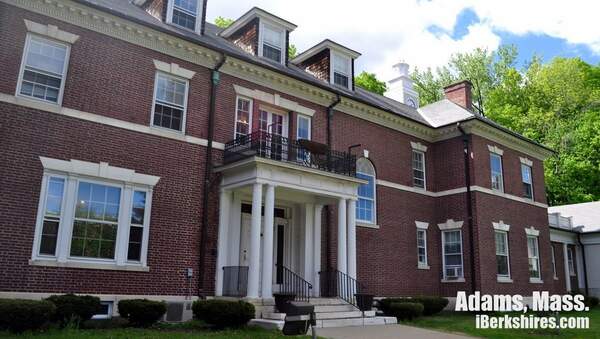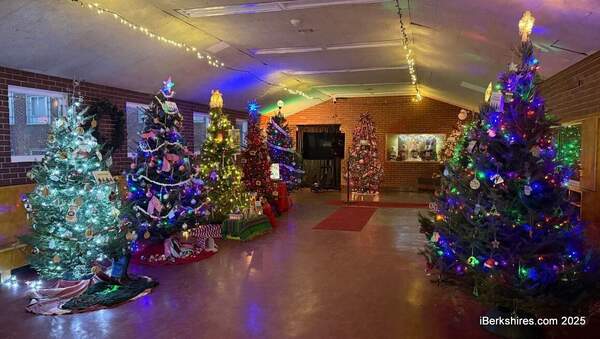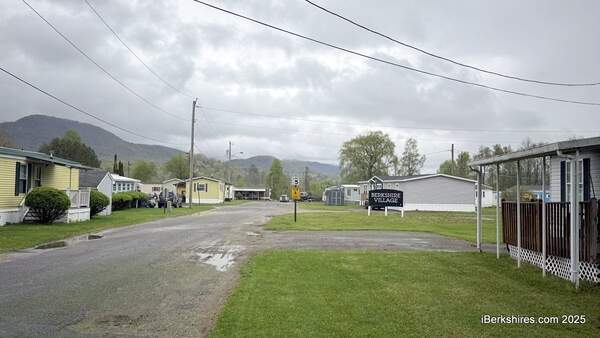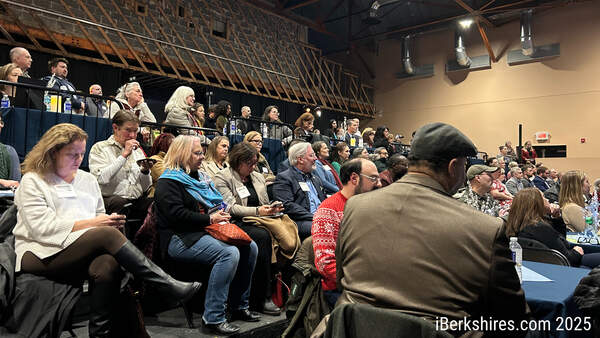
When Adams Went Its Separate Ways
ADAMS — About halfway along the mostly empty asphalt ribbon that connects Adams and North Adams sits the Bounti-Fare.The restaurant and hall is so close to the imaginary line that separates city and town that people often confuse its address. The building's in Adams but you can walk across the parking lot into North Adams. For nearly a 100 years travelers between the two communities have stopped at the site that's been a gas station, dairy bar and dance hall.
So it was fitting that the formerly (and more appropriately) named Midway was the location for a talk on Wednesday about the tangled relationship of small town and big city.
The discussion was part of "Networked Realities: (Re) Connecting the Adamses," an interactive art project linking both communities virtually, literally and historically. Artists Matthew Belanger, Ven Voisey and Sean Riley have created two art installations using lamps owned by residents of both communities at Greylock Arts in Adams and at the Massachusetts College of Liberal Arts' Gallery 51 annex on Main Street. The installation is also sponsored online by Turbulence.Org.
Belanger, co-owner of the Greylock Arts gallery, moderated the discussion between local historians Paul W. Marino of North Adams and Eugene Michelanko of Adams. With about two dozen spectators (about evenly split between communities) it was more a chat about family history than a history lecture.
And that was fitting, too, since city and town had once been one.
It was during the town of Adams' centennial year that the village of North Adams struck out on its own. The city was incorporated in 1878 but no one's sure exactly what caused the break up or how the assets and names were divvied up.
Michalenko said it was likely a growing distance between the two both in terms of industry and attitude. North Adams always seemed to be "looking forward."
In 1875, the first trains began rolling through the Hoosac Tunnel, making the village of North Adams an important rail hub. In the meantime, post-war industry was booming and the population had doubled to that of South Adams.
"North Adams was very much at a crossroads," said Marino. "There was a fear, at least on the part of some people, that if they didn't separate, North Adams was going to take over South Adams."
Most of the elected officials were from North Adams, which with a population of 10,000, had a huge political edge over its smaller sister.
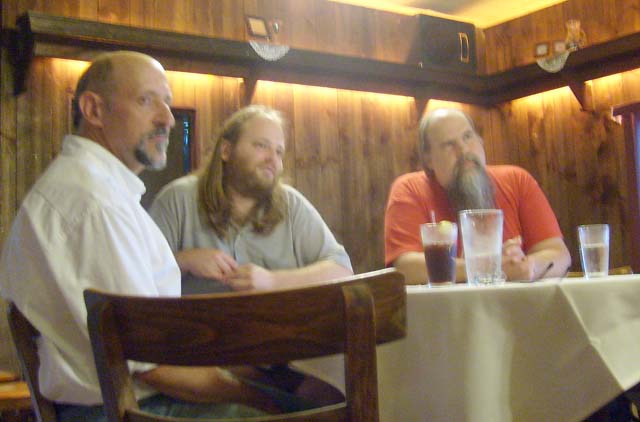 Eugene Michalenko of Adams, left, moderator Matthew Belanger and Paul W. Marino of North Adams discuss the breakup of Adams. Eugene Michalenko of Adams, left, moderator Matthew Belanger and Paul W. Marino of North Adams discuss the breakup of Adams. |
It may also have been that people were just tired of trying to figure out where there government was since the seat alternated between the villages. "It's possible there was not a town hall per se, that most officials worked out of their homes," said Marino.
And if most of the elected officials were in North Adams, South Adams residents had to trek north to find the clerks, listers, assessors and tax collectors.
So the villages — and the many villages within them — split, with Adams keeping the name of Massachusetts patriot Sam Adams and North Adams keeping much of the records, possibly because that's where they were being stored. (South Adams Savings Bank, established in 1869, clung to the village name.)
Michalenko said the use of "Mother Town" for Adams is more a term promulgated by the newspapers than an accurate description of what happened.
"The Mother Town is North Adams and South Adams combined," said Michalenko. "What you have today is like a Siamese twin sister that was divided. The Mother Town is the whole town."
"In that sense, we're more like an amoeba," said Marino to laughter.
Marino said there seems to be a more a sense of history in Adams that's not present in North Adams. A past historian, he said, warned his fellows that there wasn't much point looking to North Adams for donations for a historical marker.
"People turn out in droves" for historical events in Adams, but only a handful for those in North Adams, he continued.
"Do you think that's because North Adams doesn't think they own their history?" wondered Michalenko. "That the history they have is really just Adams' history?"
Marino responded "that may be as good an explanation as any."
Belanger wondered if splitting up were a topic today it would be taken seriously. "It would seem absurd. They're only separated by five miles."
In fact, it was that five-mile distance that brought Belanger and partner Marianne Petit to Adams in the first place. Artists who had been working in New York, they were looking for North Adams and found Adams instead. They opened Greylock Arts on Summer Street and began wondering why there were two communities and not one.
Perhaps it was because those five miles for the most part are sparsely developed centennial much of the Route 8 corridor lies in the floodplain and there have been obstacles to development. The city and town don't really rub shoulders; standing in their downtowns, each one seems far from the other. They're also separated by government, history and, in the past, by the different ethnic groups who have taken up residence in each community.
Mary Jane Kolis moved to Adams 62 years ago and said she's still referred to as being from Pittsfield. There wasn't a lot of intermarriage between ethnic groups in Adams and even less with those outside, said Kolis, who described herself as Pittsfield Polish. "You didn't mix blood."
And, perhaps most importantly, they're separated by a fierce rivalry on the high school basketball court and football field that has endured for decades.
Belanger and Petit were pleased with the turnout on Wednesday. The "Lumens" installation, which opened two weeks ago, included shuttling people between the two towns to interact with the lamps. The lights turn on when someone walks by them, illuminating sections of the installations in both communities. If your in Adams when a light turns on, it's likely being look at by someone in North Adams. On the Internet, someone reading about a particular lamp also turns it on.
"We have more projects coming in the fall," said Belanger. "We're reconnecting the Adamses through art."
And with Greylock Arts taking the lead, it seems the Sister Town may be following its Sister City's path along the creative economy — or trying to catch up, as some might say.
"Are there little jibs and jabs that we see between residents of Adams and North Adams?" asked Belanger. "It all seems to be in relatively good fun ... but there seems to be an undercurrent ... of Adams is so far behind it will never catch up. I certainly see it once in while."
"It's never struck me and it's just a simple fact that North Adams is better than Adams," said Marino to loud laughter. "It's just the way things are."
For the entire conversation, including exploding billiard balls (that's a whole 'nother story), check the schedule at Northern Berkshire Community Television Corp.

